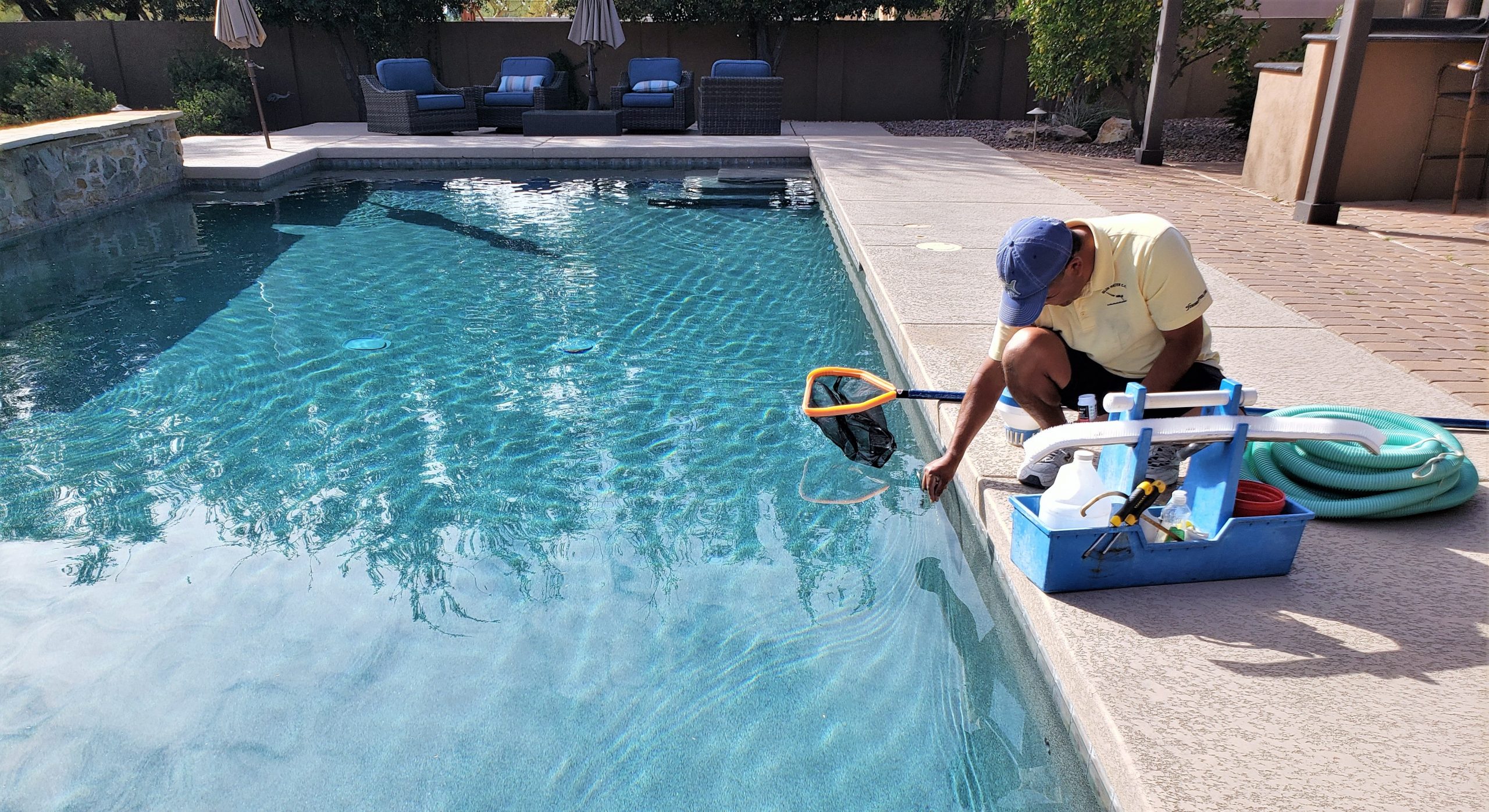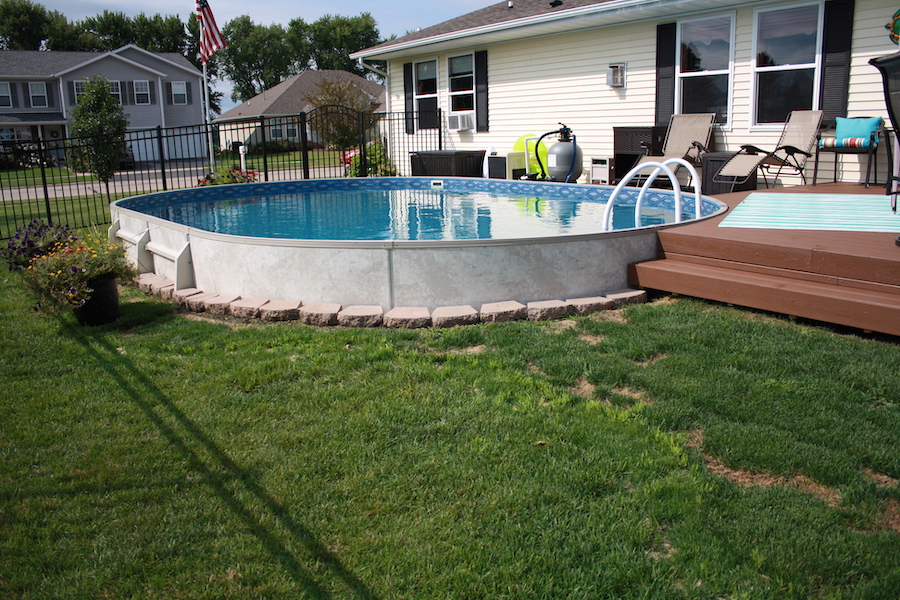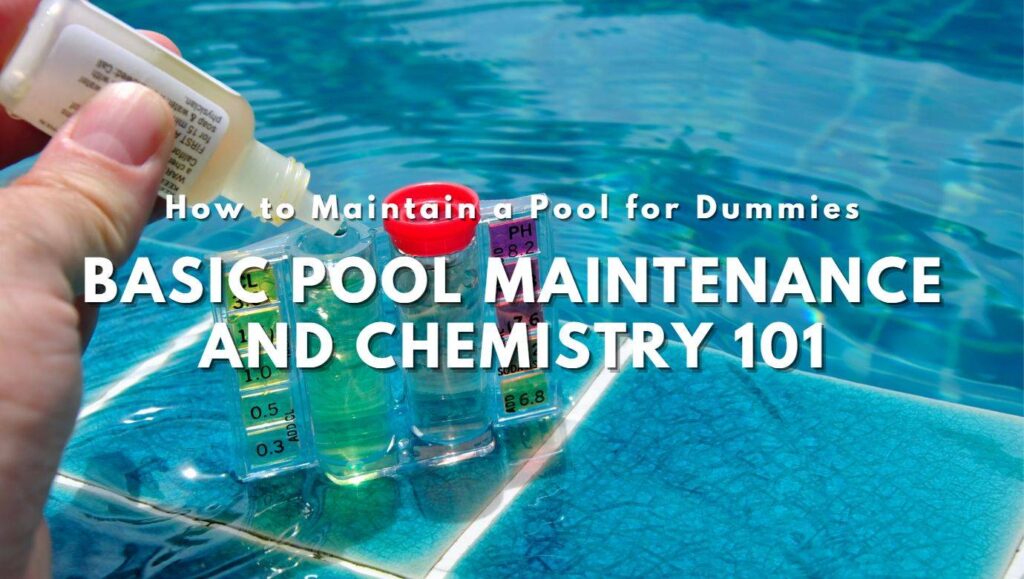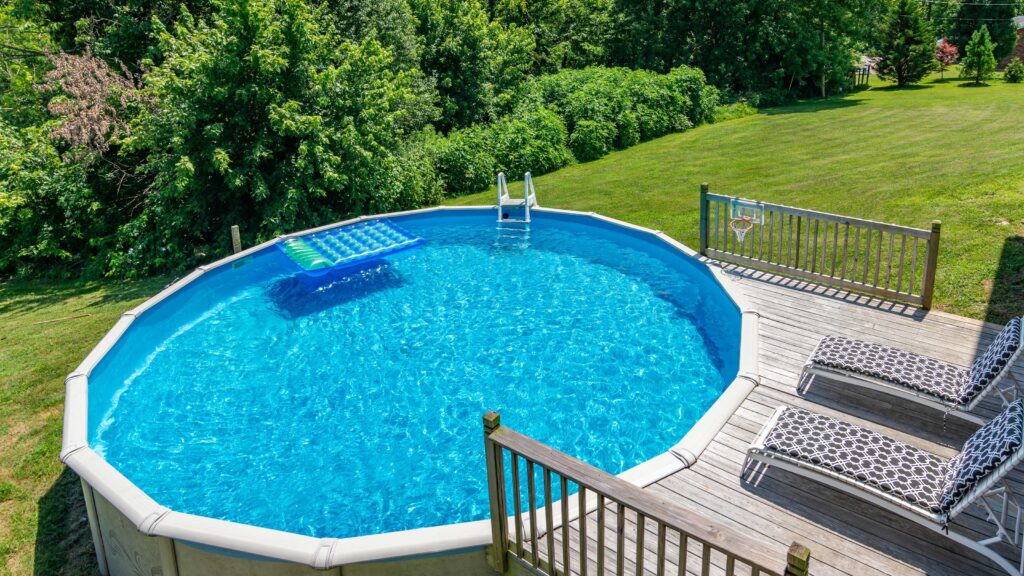Maintaining a clean and safe swimming pool is no easy task, especially when it comes to balancing the chemicals in above ground pools. In this article, we will explore the fascinating world of pool care chemistry and discover the key steps to achieve that perfect water balance. From understanding pH levels to the importance of sanitizer and shocking, you’ll gain valuable insights to keep your pool sparkling all summer long. So, let’s dive in and uncover the secrets of chemical harmony for above ground pools!
Understanding the Chemistry of Pool Water
Having a clean and sparkling pool is the dream of every pool owner. To achieve that, it’s crucial to understand the chemistry of pool water and how to properly balance its chemicals. Maintaining the right pH levels, managing chlorine, controlling alkalinity, and balancing calcium hardness are all essential aspects of pool water chemistry. In this article, we will delve deep into each of these factors and provide you with the knowledge you need to keep your pool in pristine condition.
The Importance of pH Levels
One of the key factors in maintaining crystal clear pool water is ensuring the correct pH levels. pH is a measure of the water’s acidity or alkalinity and ranges from 0 to 14, with 7 being neutral. For pools, the ideal pH level is between 7.2 and 7.6. When the pH deviates from this range, several problems can arise.
If the pH is too low (below 7.2), the water becomes acidic, leading to several issues such as corrosion of pool equipment, eye and skin irritation, and the inefficiency of chlorine. On the other hand, if the pH is too high (above 7.6), the water becomes alkaline, causing scale formation, cloudy water, and reduced chlorine effectiveness.
How Chlorine Works
Chlorine is the primary sanitizer used in pools to eliminate bacteria, algae, and other contaminants. Understanding how chlorine works is essential for maintaining a healthy pool. When added to water, chlorine forms hypochlorous acid, a powerful disinfectant that kills harmful microorganisms.
Chlorine exists in different forms, including sodium hypochlorite, calcium hypochlorite, and trichloroisocyanuric acid (commonly known as trichlor). Each form of chlorine has its advantages and is suited for different pool maintenance practices. It’s important to choose the right chlorine product based on your pool’s needs and the type of sanitizer you prefer.
Balancing Alkalinity
Alkalinity refers to the ability of water to resist changes in pH. It acts as a buffer, helping to stabilize the pH levels in your pool. Total alkalinity (TA) is the measure of all alkaline substances in the water. Properly balancing alkalinity is crucial for maintaining the desired pH levels and preventing rapid fluctuations.
If alkalinity is too low, the water becomes corrosive, causing damage to pool surfaces, equipment, and even bathing suits. Conversely, if alkalinity is too high, the water becomes scale-forming, leading to cloudy water and reduced sanitizer efficiency. Maintaining the recommended alkalinity range of 80-120 parts per million (ppm) ensures a stable and comfortable swimming environment.
Controlling Calcium Hardness
Calcium hardness refers to the calcium content in the pool water. It plays a crucial role in preventing water from becoming too corrosive or too scale-forming. The ideal calcium hardness range for pools is between 200-400 ppm.
Low calcium hardness levels can lead to the corrosion of pool surfaces and equipment. On the other hand, high levels of calcium hardness can cause scale formation on pool surfaces, plumbing, and equipment. Balancing calcium hardness is essential for the longevity of your pool and its components.
Testing Pool Water
To properly balance the chemistry of your pool water, it’s essential to regularly test its various parameters. Pool water testing allows you to monitor pH levels, chlorine levels, alkalinity, and calcium hardness. There are two primary methods of testing pool water: using test strips and water testing kits.
Using Test Strips
Test strips are an easy and convenient way to test your pool water. They consist of small strips with different color-coded pads that change color when dipped into the water. Each pad corresponds to a specific parameter, such as pH or chlorine levels. Simply dip the strip into the water and compare the color changes with the provided chart to determine the levels of different chemicals.
While test strips are quick and user-friendly, they may not provide the most accurate results, especially for intricate measurements like calcium hardness. Therefore, if precise measurements are crucial for your pool maintenance routine, it’s recommended to use water testing kits.
Water Testing Kits
Water testing kits provide more accurate results compared to test strips as they use chemical reagents to measure the levels of different chemicals in the water. These kits typically come with color-coded vials and reagents that need to be mixed with water samples. By comparing the resulting color with the provided chart, you can determine the exact concentration of each chemical parameter.
Water testing kits are a more comprehensive and reliable option for pool owners who want precise measurements. They allow you to monitor all the crucial parameters and maintain the perfect balance of chemicals in your pool water.
Frequency of Testing
To ensure the optimal health and cleanliness of your pool, it’s essential to test your pool water regularly. For most pool owners, testing once or twice a week should be sufficient. However, during periods of heavy pool usage or when experiencing water quality issues, more frequent testing may be necessary.
Keep in mind that factors such as rainfall, extreme weather conditions, and additional pool treatments may affect the chemical balance of your pool water. By testing regularly, you can promptly identify any imbalances and take the necessary steps to maintain the perfect chemical equilibrium.
This image is property of www.medallionenergy.com.
Adjusting pH Levels
Maintaining the correct pH levels in your pool water is crucial for several reasons, including the effectiveness of chlorine and the comfort of swimmers. If your pH levels are out of balance, it’s important to know how to adjust them.
Lowering pH Levels
If the pH level in your pool is too high, it’s necessary to lower it to the recommended range. One way to achieve this is by adding a pH reducer or a pH decreaser to your pool water. These products typically contain acids, such as muriatic acid or sodium bisulfate, which help to lower pH levels.
When using a pH reducer, always follow the manufacturer’s instructions and add the product in small increments. Allow the water to circulate for several hours before retesting the pH levels. By gradually adjusting the pH, you can effectively bring it down to the desired range without shocking the pool system.
Raising pH Levels
If the pH level in your pool is too low, it’s necessary to raise it to the recommended range. Adding a pH increaser, also known as an alkalinity increaser, can help achieve this. pH increasers, such as sodium bicarbonate or soda ash, act as buffers to increase the pH level in the water.
Similar to using a pH reducer, always follow the manufacturer’s instructions and add the product in small increments. Allow the water to circulate for several hours before retesting the pH levels. By gradually adjusting the pH, you can bring it up to the desired range without causing any drastic changes.
Using pH Increasers and Reducers
When using pH increasers or reducers, it’s crucial to measure the amount accurately and avoid overdosing. Adding too much of these products can lead to severe fluctuations in pH levels, which can cause further problems and require additional corrective measures.
Additionally, it’s important to note that pH levels can also be affected by other factors such as chlorine levels and alkalinity. Therefore, it’s essential to test the water regularly and make adjustments as needed to maintain the perfect balance of chemicals in your pool.
Chlorine Management
Chlorine is a vital component in pool water chemistry as it effectively sanitizes the water and keeps it free from harmful microorganisms. Proper chlorine management is essential for maintaining a safe and healthy swimming environment.
Types of Chlorine Products
There are different types of chlorine products available on the market, each with its advantages and ideal usage conditions. Some of the most common chlorine products include chlorine tablets, liquid chlorine, granular chlorine, and chlorine shock.
Chlorine tablets, also known as stabilized chlorine, are slow-dissolving tablets that provide a steady release of chlorine into the water. They are commonly used in automatic chlorinators or skimmer baskets. Liquid chlorine, on the other hand, is a fast-acting sanitizer that requires careful measuring and dosing. It is usually poured directly into the pool water or added through a chemical feeder.
Granular chlorine is a powdered form of chlorine that is quickly dissolved in the water. It is typically used for shock treatments or periodic maintenance. Chlorine shock, as the name suggests, is a highly concentrated chlorine product used to rapidly increase chlorine levels or treat water issues such as algae infestations.
Adding Chlorine to the Pool
Adding chlorine to your pool is a straightforward process, but it requires careful consideration of factors such as the type of chlorine product, pool size, and current chlorine levels. When using chlorine tablets, it’s important to follow the instructions provided by the manufacturer and use a chlorinator or a floating dispenser specifically designed for tablets.
Liquid chlorine can be added directly to the pool water by pouring it in front of the return jets. Granular chlorine should be pre-dissolved in a bucket of water and then evenly distributed across the pool surface. Chlorine shock, being a highly concentrated product, requires careful measuring and dosing according to the instructions on the packaging.
Maintaining Proper Chlorine Levels
To maintain proper chlorine levels in your pool, it’s crucial to test the water regularly and ensure it falls within the recommended range of 1-3 parts per million (ppm). Chlorine should be added to the pool regularly to compensate for factors that decrease its effectiveness, such as sunlight, heavy pool usage, and rainfall.
It’s important to note that excessive chlorine levels can lead to discomfort for swimmers, eye and skin irritation, and a strong chlorine odor. Conversely, insufficient chlorine levels can result in ineffective sanitization and the growth of algae and bacteria. By maintaining proper chlorine levels, you can enjoy a clean and safe swimming experience.
This image is property of static.wixstatic.com.
Alkalinity Control
Alkalinity is a critical factor in pool water chemistry as it helps stabilize pH levels and prevents rapid fluctuations. Proper alkalinity control is essential for the overall health and maintenance of your pool.
Understanding Total Alkalinity
Total alkalinity (TA) is the measure of all alkaline substances in the pool water. It acts as a buffer, preventing rapid changes in pH levels. The recommended range for total alkalinity is generally between 80-120 parts per million (ppm).
High total alkalinity levels can result in a condition known as “total alkalinity lock,” which makes it difficult to adjust pH levels. Conversely, low total alkalinity can lead to pH fluctuations and instability. Balancing total alkalinity is crucial for maintaining a stable swimming environment and preventing costly damage to pool surfaces and equipment.
Increasing and Decreasing Alkalinity
To increase total alkalinity in your pool, you can use alkalinity increasers or buffers such as sodium bicarbonate. These products help raise the level of alkalinity, thereby stabilizing pH levels.
On the other hand, if total alkalinity is too high and causing pH levels to be too stable, you can lower it by adding acid. Always follow the manufacturer’s instructions when using any chemicals and make adjustments gradually to avoid drastic changes.
Using Alkalinity Adjusters
When using alkalinity adjusters, it’s crucial to measure the amount accurately and avoid adding too much. Adding too much alkalinity increaser or reducer can cause imbalances and require additional corrective measures.
Periodic testing of total alkalinity is essential to monitor any changes and make necessary adjustments. By maintaining the proper alkalinity levels, you can prevent pH fluctuations, protect your pool equipment, and ensure a comfortable swimming experience.
Calcium Hardness Control
Calcium hardness refers to the calcium content in the pool water. It plays a crucial role in preventing water from becoming too corrosive or too scale-forming. Proper control of calcium hardness is essential for the longevity of your pool and its components.
Understanding Calcium Hardness
Calcium hardness refers to the concentration of calcium in the pool water and is typically measured in parts per million (ppm). The recommended range for calcium hardness is generally between 200-400 ppm.
Low calcium hardness can result in the erosion of pool surfaces and equipment, while high levels can cause scale formation and cloudy water. By maintaining the proper calcium hardness levels, you can prevent these issues and ensure the longevity and efficiency of your pool system.
Increasing and Decreasing Calcium Hardness
To increase calcium hardness in your pool, you can add calcium chloride or calcium chloride dihydrate. These products raise the calcium content in the water, helping to prevent corrosion and damage to pool surfaces and equipment.
Conversely, if calcium hardness is too high, you can lower it by partially draining and diluting the pool water. However, this should be done with caution, as excessive dilution can lead to imbalances in other chemical parameters.
Using Calcium Hardness Adjusters
When using calcium hardness adjusters, it’s important to follow the manufacturer’s instructions and measure the amount accurately. Adding too much or too little calcium hardness adjuster can cause imbalances and require additional corrective measures.
Regular testing and monitoring of calcium hardness is essential to ensure the levels remain within the recommended range. By balancing calcium hardness, you can protect your pool from corrosion and scale formation, prolonging its lifespan.
This image is property of www.mrpoolman.com.au.
Preventing Algae Growth
Algae growth is a common problem faced by pool owners. While maintaining proper sanitation and regular cleaning can help prevent algae, it’s important to take additional measures to keep your pool free from these unsightly and potentially harmful organisms.
Maintaining Proper Sanitation
Proper sanitation is crucial for preventing algae growth in your pool. Maintaining the right concentration of chlorine or other sanitizers helps eliminate algae spores and inhibits their growth. Regularly testing and adjusting the chlorine levels in your pool, along with maintaining proper pH and alkalinity, is key to preventing algae.
Additionally, it’s important to regularly clean and scrub pool surfaces, steps, and edges where algae can easily accumulate. By keeping your pool well-sanitized and clean, you can significantly reduce the chances of algae growth.
Algaecide Treatment
In addition to regular sanitization, using algaecide treatments can provide an extra layer of protection against algae growth. Algaecides are chemicals specifically designed to kill and prevent algae. They are available in different forms, including liquid, granular, and tablet forms.
When using algaecides, it’s important to follow the manufacturer’s instructions and recommended dosage. Adding algaecides to your pool on a regular basis can help prevent algae infestations and ensure your pool remains clear and beautiful.
Regular Brushing and Filtration
Regularly brushing the pool walls, steps, and other surfaces can physically remove algae spores and prevent their attachment. Brushing also helps improve the effectiveness of sanitizers and prevents the formation of algae colonies.
Filtration plays a vital role in removing debris, microorganisms, and other particles from the pool water. Regularly cleaning and backwashing the pool filter ensures optimal filtration, reducing the chances of algae growth. Additionally, ensuring the proper circulation of water and maintaining a consistent flow can help prevent stagnant areas where algae can thrive.
By combining proper sanitation, algaecide treatments, regular brushing, and filtration, you can effectively prevent algae growth and enjoy a clean and inviting pool.
Shocking the Pool
Pool shocking is an essential maintenance practice that helps maintain proper chlorine levels, eliminate bacteria and contaminants, and clarify the water. Understanding when and how to shock your pool is vital for its overall cleanliness and health.
What is Pool Shocking?
Pool shocking involves adding a high concentration of chlorine to the water to achieve a rapid and thorough sanitization. Pool shocks are available in different forms – liquid, granular, or powdered – and are typically composed of a highly concentrated form of chlorine.
The process of pool shocking raises the chlorine levels significantly, ensuring the elimination of any bacteria, algae, or other contaminants that may be present in the water. It also helps restore chlorine effectiveness by breaking down chloramines, which can cause a strong chlorine odor and eye irritation.
When to Shock the Pool
Shock treatments should be performed in specific situations to maintain water clarity and sanitation. It is recommended to shock your pool:
- At the beginning and end of the pool season
- Following heavy rainfall
- After periods of heavy pool usage
- When you notice an algae bloom or green water
- When the chlorine levels are consistently low or ineffective
- If there is a strong chlorine odor or eye irritation
Regularly testing and monitoring the chlorine levels in your pool is crucial for determining the need for shock treatments. By recognizing the signs and acting promptly, you can ensure the efficacy and cleanliness of your pool water.
How to Shock the Pool
When shocking your pool, it’s important to follow the manufacturer’s instructions for the specific shock product you are using. Generally, the process involves pre-dissolving the shock in a bucket of water and pouring it evenly around the pool edges.
It’s recommended to shock your pool in the evening or at night to allow the shock treatment to work undisturbed. Running the pool filtration system continuously during the shock treatment helps to distribute the chlorine effectively throughout the water.
After the shock treatment, it’s important to retest and adjust the chlorine levels as needed. Only when the chlorine levels return to the recommended range should the pool be reopened for swimming.
By understanding when and how to shock your pool, you can effectively maintain proper sanitation, eliminate contaminants, and enjoy clean and clear water.
This image is property of cdn.mos.cms.futurecdn.net.
Preventing and Treating Cloudy Water
Cloudy water is a common issue faced by pool owners and can be caused by various factors such as improper chemical balance, poor filtration, or environmental factors. Understanding the causes and employing the right solutions can help prevent and treat cloudy water effectively.
Identifying Causes of Cloudiness
Cloudy water can have several causes, and identifying the specific factor is essential for implementing the correct solution. Some common causes of cloudy water include:
- Poor water circulation and filtration
- Algae growth or presence of other microorganisms
- High levels of dissolved or suspended particles
- Improper pH or alkalinity levels
- Insufficient sanitizer or chlorine levels
- Environmental factors such as heavy rain, dust, or pollen
By identifying the cause of cloudy water, you can take the necessary steps to resolve the issue and restore the clarity of your pool.
Clarifying the Pool Water
To clarify cloudy water, it’s important to address the root cause and implement the appropriate solutions. Some common methods for clarifying pool water include:
- Increasing filtration and circulation: Run the pool pump and filter for longer periods to allow for better water circulation and filtration. Regularly clean and backwash the pool filter to remove any trapped particles and debris.
- Superchlorination: Shocking the pool with a high dose of chlorine can help eliminate contaminants and restore water clarity. Follow the instructions provided with the shock product and test the water regularly to ensure proper levels.
- Using water clarifiers: Water clarifiers are chemicals specifically designed to bind particles together, allowing the pool filter to effectively remove them. These products can help clear up cloudy water caused by suspended particles.
- Vacuuming and brushing: Regular vacuuming of the pool and brushing of pool surfaces can physically remove particles and improve water clarity. Pay extra attention to corners, stairs, and other areas where debris and particles tend to accumulate.
Filtration and Regular Maintenance
Maintaining proper filtration and regular maintenance is crucial for preventing and treating cloudy water. By regularly cleaning and backwashing the pool filter, you can ensure optimal filtration and remove any trapped particles.
It’s also important to regularly test the water and adjust the chemical levels as needed. By maintaining proper pH, alkalinity, and chlorine levels, you can prevent imbalances that can contribute to cloudy water.
Additionally, regular vacuuming, brushing, and skimming can help prevent the buildup of debris and particles in the pool. By staying proactive and implementing these maintenance practices, you can prevent the occurrence of cloudy water and enjoy a clean and inviting pool.
Maintaining Proper Filtration
Proper filtration is crucial for maintaining clean and clear pool water. Choosing the right filter, performing regular backwashing and cleaning, and timely filter replacement are key aspects of effective filtration.
Choosing the Right Filter
Selecting the right filter for your pool is vital for optimal filtration. There are three main types of pool filters: sand filters, cartridge filters, and diatomaceous earth (DE) filters. Each filter type has its advantages and considerations.
- Sand filters: Sand filters are the most common and affordable option. They use a thick layer of sand to trap and remove impurities from the water. Sand filters are easy to maintain and backwash, making them a popular choice for many pool owners.
- Cartridge filters: Cartridge filters use a replaceable cartridge made of pleated fabric to capture debris and particles. They offer superior filtration and require less frequent backwashing compared to sand filters. Cartridge filters are ideal for pools with low to moderate debris loads.
- DE filters: DE filters provide the highest level of filtration. They use diatomaceous earth, a fine powder of fossilized diatoms, as the filtration medium. DE filters offer exceptional water clarity, but they require more maintenance and are the most expensive option.
Choosing the right filter depends on factors such as your pool size, debris load, and personal preference. Consider consulting with a pool professional to determine the best filter for your specific needs.
Backwashing and Filter Cleaning
Regular backwashing and cleaning are essential for maintaining the efficiency of your pool filter. Backwashing involves reversing the water flow through the filter to remove trapped debris and particles.
To backwash a sand filter, follow these steps:
- Turn off the pool pump and set the filter valve to the “backwash” position.
- Turn on the pump and allow it to run until the water in the sight glass or waste pipe appears clear.
- Turn off the pump, set the valve to “rinse,” and run the pump for a few minutes to clear any remaining debris.
- Turn off the pump again, set the valve back to the desired filtration setting, and restart the pump.
For cartridge filters, cleaning involves removing and rinsing the cartridges with water. Follow the manufacturer’s instructions for the specific cleaning procedure, as it may vary depending on the filter model.
Performing regular backwashing and filter cleaning ensures optimal filtration and helps maintain clean and clear pool water.
Filter Replacement and Maintenance
Filter replacement is necessary when your filter becomes worn out or damaged. Over time, the filtration media in both sand and cartridge filters can become clogged or degraded, reducing their effectiveness.
It’s important to periodically inspect your filter and replace it as needed. For sand filters, the sand should be replaced every 5-7 years, depending on usage and water conditions. Cartridge filters typically require replacement every 1-2 years, although some models can last longer.
Regular filter maintenance includes checking and cleaning the filter baskets, inspecting the filter seals and O-rings, and lubricating any moving parts. Follow the manufacturer’s instructions for proper maintenance procedures for your specific filter model.
By maintaining proper filtration, performing regular backwashing and cleaning, and timely filter replacement, you can ensure optimal water clarity and a clean swimming experience.
In conclusion, understanding the chemistry of pool water is crucial for maintaining a clean, clear, and safe swimming environment. Proper management of pH levels, chlorine, alkalinity, and calcium hardness is essential for preventing problems such as corrosion, scale formation, algae growth, and cloudy water.
Regular testing of pool water using test strips or water testing kits allows you to monitor the chemical parameters and make adjustments as needed. Adjusting pH levels, managing chlorine, controlling alkalinity, and balancing calcium hardness are key components of pool water maintenance.
Preventing algae growth, shocking the pool, treating cloudy water, and maintaining proper filtration are additional practices necessary for maintaining a healthy pool. By following these guidelines and taking proactive measures, you can enjoy crystal clear water and make the most of your pool all season long.









